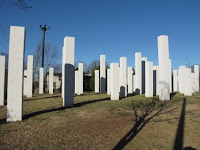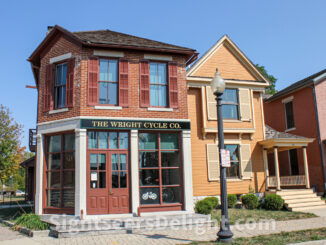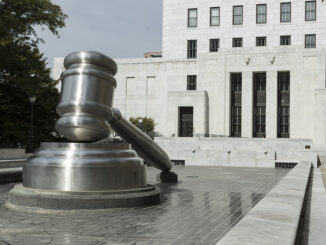If public art floats your boat, here are three destinations worth scoping out on your next trip:
Atlanta: 54 Columns
The concrete columns at the intersection of Glen Iris Drive and Highland Avenue aren’t another partially finished community. No, “54 Columns” — a collection of 54 columns ranging from 10 to 20 feet tall — is art, and it’s supposed to resemble Atlanta’s skyline.
The art project — created in 1999 by Sol LeWitt — was commissioned by the Fulton County Arts Council. In 2007, the Atlanta City Council designated the 210-acre Freedom Park, which is home to “54 Columns,” as an Atlanta Public Art Project.
Dublin, Ohio: Concrete Corn
Dublin is a charming suburb of Ohio’s capital city. Celebrating its bicentennial this year, the town of 40,874 is perhaps best known for the annual Dublin Irish Festival or as the home of Wendy’s.
But one of the city’s true gems resides near the intersection of Frantz and Rings roads. On a small plot of land tucked in between office complexes, “Field of Corn (with Osage Orange),” better known as Cornhenge, features 109 six-foot-tall concrete ears of corn.
The eerily symmetric rows of corn were erected as a public art exhibit and tribute to the corn that once grew here. Sam Frantz, a pioneer of hybrid corn and his wife, Eulalia, previously owned the land and grew corn here.
Malcolm Cochran sculpted the concrete corn statues as part of the project commissioned by the Dublin Arts Council. The field was completed in 1994, and the project wasn’t without its share of controversy. Still, it draws visitors from across the country.
Carmel, Ind.: Sidewalk statues
The city’s streets are buzzing with activity: A father helps his daughter take her first ride on a bicycle; an artist paints the archway welcoming visitors to the city’s Arts & Design District; a couple embraces in a kiss to celebrate the end of World War II.
If that last one seems a little out of place, that’s because none of these people out and about are real. They’re life size statues depicting everyday scenes.
The statues, sculpted by J. Seward Johnson, are part of the city’s plan to turn the Old Town area into an arts district and make a “walkable outdoor museum.”






